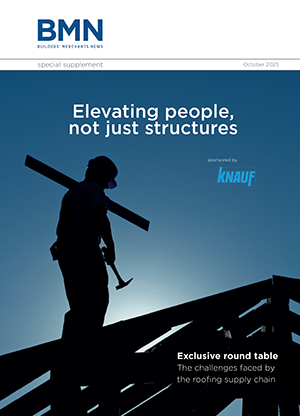In the face of significant challenges in the global economy, the builders’ merchant industry has performed well over the past five years. While many of the sector’s leading players have successfully restructured their finances and operations, they must now look above the parapet with confidence.
Since the start of the financial crisis, the main challenge has been to implement ‘self-help measures’. Assuming that there would be no pick-up in the global economy, businesses throughout the sector have focused on improving the bottom line through margin enhancement initiatives, market share gains and customer loyalty.
With the economic recovery in progress, merchants are experiencing double-digit like-for-like increases in revenues and are becoming more outward looking. Many are now in a position to capitalise on the opportunities that the upturn presents – whether through organic expansion or acquisitions – in what remains a fragmented market.
While some commentators point to the sector becoming too reliant on a fragile housing boom, revenues in the builders’ merchant industry are broadly originated from the repair, maintenance and improvement (RMI) market, which is largely driven by consumer confidence and housing transactions. RMI accounts for broadly 40% to 50% of revenues, which is significant in comparison to the 10% to 20% that is attributed to new residential/construction business.
To the benefit of builders’ merchants, the RMI space is less cyclical and is closely correlated to GDP growth. As confidence grows, consumers have the propensity to buy more ‘big ticket’ items and invest in home improvements, making GDP an indicator as important as new housebuilding statistics.
However, many builders’ merchants, and those firms connected to the sector, remain cautious over their future prospects. Rightly, it will be critical for business leaders to closely monitor customer behaviour and ensure that they have the right-sized operations to protect market share and scale while maintaining strict financial disciplines.
With little appetite to introduce incremental costs, businesses will need to remain lean and versatile to respond to any changes in demand and the wider economy, as we all know that volumes can come off quickly.
The next challenge that is arguably facing businesses in the sector is the drive for innovation and the need to be on the front foot to respond to evolving consumer spending habits. Those that are best able to implement technology and ‘smart’ e-commerce platforms will differentiate themselves from the competition, with the market moving from traditional loyal consumer bases to tradesmen acting as savvy, price and technology-driven consumers.
There are certainly interesting times ahead for the broader sector. This is particularly true on the input side, where potential mergers among some of the global building materials players could shake up the industry as market consolidation takes hold. But builders’ merchants have largely weathered the economic storm well and, with access to a range of funding and financial products, are well placed to capitalise on increasing consumer confidence.
Carly Ball is a Relationship Director and the Global Head of Building Materials at Lloyds Bank.







